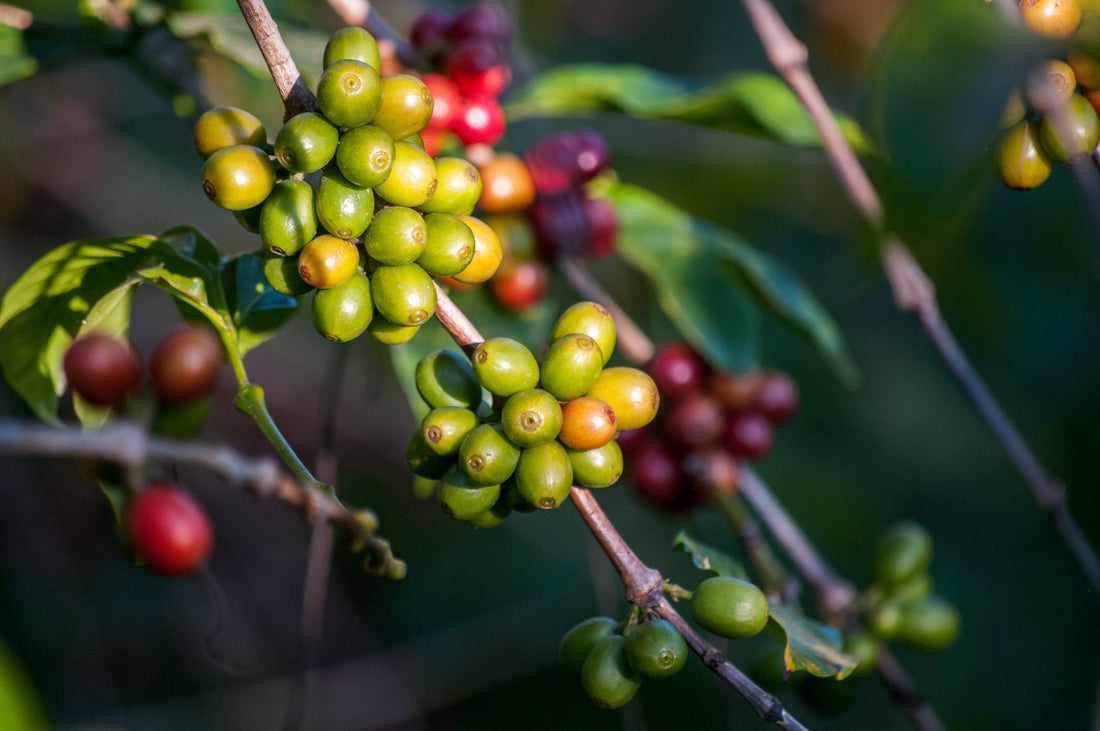
Anaerobic fermentation: no oxygen, no problem
Coffee is one of the most popular and widely consumed beverages in the world. It's a source of income for millions of people, from farmers to roasters and baristas. Coffee fermentation is an important step in coffee processing that plays a crucial role in determining the final flavor and aroma of coffee. One of the newest and most promising methods of coffee fermentation is anaerobic fermentation. In this article, we will explore the anaerobic fermentation method and its potential to shape the future of coffee.
Fermentation is a natural process that occurs when microorganisms break down organic matter. In coffee processing, fermentation is used to remove the mucilage or the outer layer of the coffee cherry. This mucilage contains sugars and other compounds that can affect the taste and aroma of coffee if not removed properly. Traditionally, coffee fermentation is done under aerobic conditions, where oxygen is present. However, in recent years, anaerobic fermentation has grown in popularity, especially among specialty coffee producers.
Anaerobic fermentation is a method of fermentation where microorganisms break down organic matter in the absence of oxygen. In coffee processing, this means that the coffee cherries are placed in a sealed container, where the oxygen is removed and the fermentation process begins. Anaerobic fermentation can be done in different ways, depending on variables such as temperature, time, and the type of microorganisms used.
One of the major benefits of anaerobic fermentation is its ability to produce unique and complex flavors in coffee. The absence of oxygen creates an environment where different types of microorganisms can thrive, each contributing to the flavor and final aroma of the coffee. For example, lactic acid bacteria can produce fruity and sour flavors, while yeast can produce floral and sweet flavors. By controlling the variables of the anaerobic fermentation process, coffee producers can create a wide range of flavors and aromas, making anaerobic coffee one of the most exciting developments in specialty coffee.
Another benefit of anaerobic fermentation is its potential to reduce water consumption in coffee processing. Traditional aerobic fermentation requires large amounts of water to wash away the mucilage. In contrast, anaerobic fermentation requires much less water because the fermentation process breaks down mucilage more efficiently. This can be particularly beneficial in regions where water is scarce or expensive, helping to reduce the environmental impact of coffee production.
Additionally, anaerobic fermentation can increase the quality and consistency of coffee. By controlling the variables in the fermentation process, coffee producers can ensure coffee cherries are fermented to a specific degree, resulting in a consistent flavor profile. This can be especially beneficial for specialty coffee, where consistency and quality are paramount.
In conclusion, anaerobic fermentation is a promising method of coffee fermentation that has the potential to shape the future of coffee. Its ability to produce unique and complex flavors, reduce water consumption and increase the quality and consistency of coffee makes it an exciting development in the field of specialty coffee. As coffee growers continue to experiment with different variables and microorganisms, we can expect to see even more exciting and delicious anaerobic coffees in the future.
Fermentation is a natural process that occurs when microorganisms break down organic matter. In coffee processing, fermentation is used to remove the mucilage or the outer layer of the coffee cherry. This mucilage contains sugars and other compounds that can affect the taste and aroma of coffee if not removed properly. Traditionally, coffee fermentation is done under aerobic conditions, where oxygen is present. However, in recent years, anaerobic fermentation has grown in popularity, especially among specialty coffee producers.
Anaerobic fermentation is a method of fermentation where microorganisms break down organic matter in the absence of oxygen. In coffee processing, this means that the coffee cherries are placed in a sealed container, where the oxygen is removed and the fermentation process begins. Anaerobic fermentation can be done in different ways, depending on variables such as temperature, time, and the type of microorganisms used.
One of the major benefits of anaerobic fermentation is its ability to produce unique and complex flavors in coffee. The absence of oxygen creates an environment where different types of microorganisms can thrive, each contributing to the flavor and final aroma of the coffee. For example, lactic acid bacteria can produce fruity and sour flavors, while yeast can produce floral and sweet flavors. By controlling the variables of the anaerobic fermentation process, coffee producers can create a wide range of flavors and aromas, making anaerobic coffee one of the most exciting developments in specialty coffee.
Another benefit of anaerobic fermentation is its potential to reduce water consumption in coffee processing. Traditional aerobic fermentation requires large amounts of water to wash away the mucilage. In contrast, anaerobic fermentation requires much less water because the fermentation process breaks down mucilage more efficiently. This can be particularly beneficial in regions where water is scarce or expensive, helping to reduce the environmental impact of coffee production.
Additionally, anaerobic fermentation can increase the quality and consistency of coffee. By controlling the variables in the fermentation process, coffee producers can ensure coffee cherries are fermented to a specific degree, resulting in a consistent flavor profile. This can be especially beneficial for specialty coffee, where consistency and quality are paramount.
In conclusion, anaerobic fermentation is a promising method of coffee fermentation that has the potential to shape the future of coffee. Its ability to produce unique and complex flavors, reduce water consumption and increase the quality and consistency of coffee makes it an exciting development in the field of specialty coffee. As coffee growers continue to experiment with different variables and microorganisms, we can expect to see even more exciting and delicious anaerobic coffees in the future.
